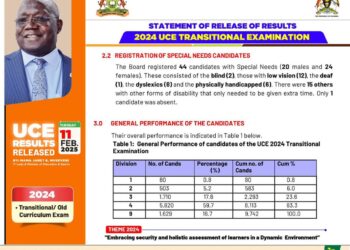By Woira Michael
For quite some time I have been trying to compare my country Uganda and our close friend China. I see a lot that has been achieved through our partnerships and I see a lot more is still in the offing for us to gain from in the friendship between the two countries.
On my trip to China a few weeks ago, I really admired whatever step China has reached and I salute the leaders of the great Communist party who have tirelessly made sure that all their development plans have been achieved in the allocated periods documented in their termly plans.
First, China is the fastest growing country in the world for the last few decades and one of the defining features of china’s growth has been investment-led growth. China’s sustained high economic growth and increased competitiveness in manufacturing has been underpinned by a massive development of physical infrastructure.
Infrastructural development has greatly played an important role in promoting economic growth in China between 1975 and 2007; the results reveal that infrastructure stock, labour force, public and private investments have played an important role in economic growth in China.
More importantly, infrastructure development in China has a significant contribution to growth than both private and public investment. Further, there is unidirectional causality from infrastructure development to output growth justifying China’s high spending on infrastructural development since the early nineteen- nineties.
My experience from China suggests that it is necessary to design an economic policy that improves the physical infrastructure as well as human capital formation for sustainable economic growth in developing countries.
The Chinese believe that if you want to be rich, you need to build a road and a bridge. Which is true, as the infrastructure facilities; China has built over four decades of reform and opening-up have boosted its economic growth and helped it lift more than 800 million people out of poverty and made them well off with better services.
Infrastructure facilities are public goods that help improve productivity and people’s standards of living, even in poverty-stricken areas. For China, infrastructure has facilitated economic development, and vice-versa.
Based on my observations, I view China as the leading infrastructure finance provider on the continent as demonstrated by its pledge of $60 billion to Angola and Guinea to work on Big projects including hydropower plants, an oil refinery in Nigeria, and a new city in Egypt and most of the funding which amounts to almost $47 billion out of the $60 is for infrastructure projects.
China also included infrastructure construction in its five-year plans, which have had different characteristics in different periods of economic development. Infrastructure was given the second-highest priority next only to the development of agriculture and township enterprises highlighting the concept of scientific development.
In my observation, I found that the introduction of market mechanisms in public goods supply has much promote development in China. To overcome the shortage of funds for infrastructure construction, one professor told me that the country follows the principle of marketization, where some fees are charged for the use of public goods, in order to share construction and operation costs, and promote rational and effective allocation of resources.
And using the same mechanism, the income collected from the use of the bridges, tunnels and ferries is used to repay the construction loans which is a very good model that all the African countries should just copy and paste here and in this case I recommend that Uganda starts using the model with the current Entebbe Express way and other upcoming projects like the flyovers.
China has also gradually introduced diversified investment and financing models such as build-operate-transfer, asset securitization and public-private partnership, after initially relying on financing support from the World Bank. These models have played a big role in some of China’s important infrastructure projects like Railway construction, Tunnel construction, Road construction and many more other projects.
Back to Africa, I think many countries have benefited from the infrastructural development goal by China, many of the countries are beneficiaries one being Kenya, the Standard Gauge Railway is the largest infrastructure project in Kenya since its independence in 1963. China Eximbank provided the finance for the first phase of the 472 kilometers of track between Nairobi and Mombasa at a cost of $3.2 billion.
In Uganda here, we have achieved more than enough in infrastructural development from the government of China and one of the projects that we have got is the Entebbe Express way, this road is no different from the express ways in China basing on the design and quality, the expressway was estimated to cost US$476 million and of this, US$350 million was a loan from the Exim Bank of China at 2 percent annual interest which was a very good deal and right now the express way is very ready to use pending approval of payment mechanism by parliament..
In neighboring Ethiopia, an electric train line from Addis Ababa to Djibouti, which is also Chinese-financed, opened years ago. The cost for this more expensive type of railway was $3.4 billion for 756 kilometers.
I am very sure that this China-Africa relationship will make a way for many African countries to develop their infrastructures like the roads, Bridges and the other ones that are of great importance to the various countries.
Do you have a story in your community or an opinion to share with us: Email us at editorial@watchdoguganda.com











